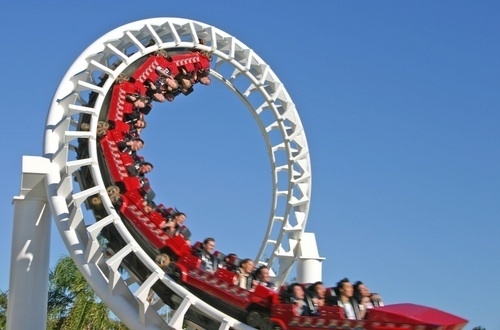The Chinese government is talking about turning the home village of Mo Yan, winner of the 2012 Nobel Prize in Literature, into a theme park. And there’s nothing wrong with that, really. Raphael Samuel, a historian and philosopher, has pointed out in the Independent that “Education and entertainment need not be opposites ... People do not simply ‘consume’ images in the way in which, say, they buy chocolate. As in any reading, they assimilate them as best they can to pre-existing images and narratives.”
So our global, media-saturated culture has engendered real-life theme parks blooming out of our books, and even stranger ones still bound in paper and ink. Here, then, are two fictional theme-parks, two real ones based on fiction, and one real one reinvented through a much loved (if factually suspect) work of nonfiction. I'm exhausted.
England, England
In Las Vegas, you can walk from the Eiffel Tower to the Sphinx; Julian Barnes takes that idea to the point of absurdity with an entrepreneur who turns England's Isle of Wight into a theme park for the whole country. England, England has a scale model of Big Ben and artificially created “pea-soup” fog. The book takes a delightful twist when England, England becomes more successful than “Old England.” Satire or prophecy?
Pastoralia
Just when you thought Julian Barnes had come up with the cleverest story about theme parks, along comes George Saunders, who apparently sees the world as nothing but. “Pastoralia,” the title story of his second collection, features a man and a woman pretending to be cavemen in a learning exhibit. But they can’t just live as cavemen, grunting at each other; they have to talk to each other in English and fax forms every day. Still, the strangest part of "Pastoralia" — like its sister-story "CivilWarLand in Bad Decline" — is just how plausible it is.
The Mo Yan Cultural Experience
“Your son is no longer your son, and the house is no longer your house,” the author’s displaced father was told as the theme park plans went public. The country has also paid for local fields to be seeded with sorghum (an "unprofitable crop," says the Guardian) in homage to Mo Yan’s famous novel, Red Sorghum. If this really happens, the people of Mo Yan Cultural Experience, formerly known as Ping'an village, will have one thing to say:Life and Death Are Wearing Me Out.
The Wizarding World of Harry Potter
I grew up with Harry Potter: I was eleven when the first book came out, and nineteen when the last one broke sales records. So I was surprised by the location of the Hogwarts theme park. It wasn’t accessible from King’s Cross railway station (even from Platform Nine and Three-Quarters there) or, for that matter, any part of England. Sunny Florida, instead, is where Muggles can buy a wand from Ollivander’s or go for a ride on a Hippogriff. (Tolkien fanatics, go to Hobbiton for your Frodo fix.)
SantaLand
When David Sedaris finds himself in the employ of an nightmarishly cheerful North Pole, facing hordes of hostile parents ("'You look so fucking stupid'") and frazzled children (one of them tells Santa "that he wanted his dead father back and a complete set of Teenage Mutant Ninja Turtles"), he ends up with one of the funniest experiences that anybody could possibly recount. Whether the story's 100% true or just "true enough," it's hilariously clear that the theme-park mentality has swallowed our consumerist lives up entirely.
What next? Mo Yan writing a satirical novel about the people who live, work, and love at MoYanLand? Nothing would be more appropriate — for the man, or for the citizens eagerly awaiting a new roller-coaster ride.
image credit: authorsincognito.blogspot.com





 A Black Balloon Publication ©
A Black Balloon Publication ©